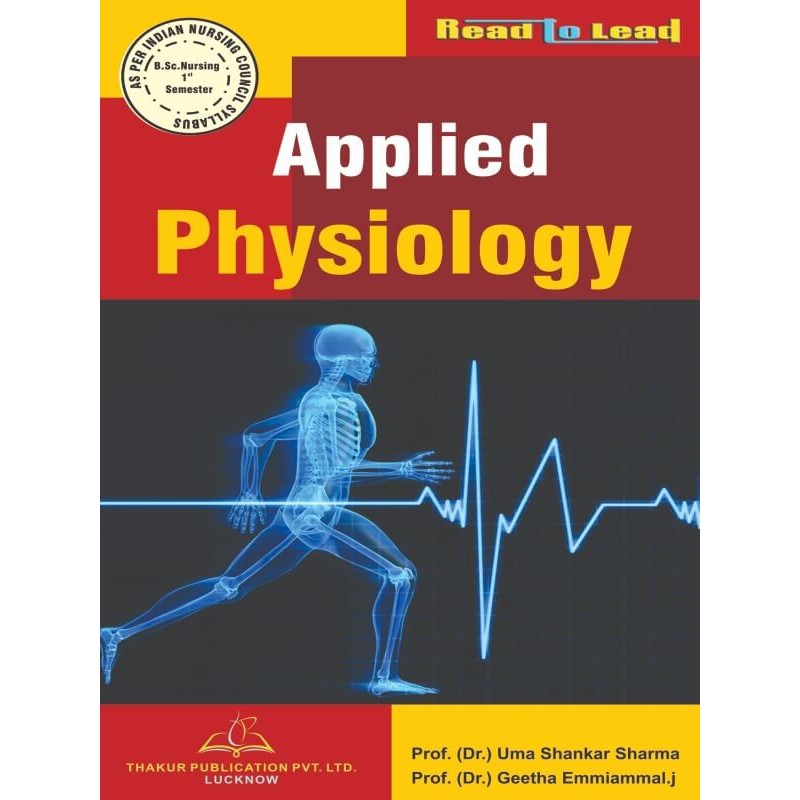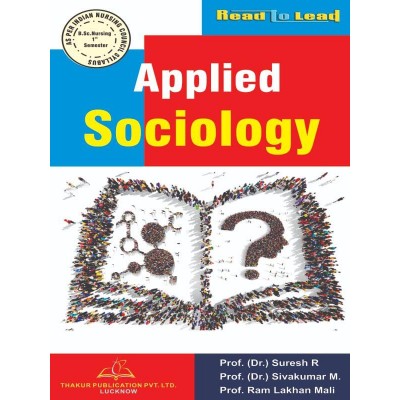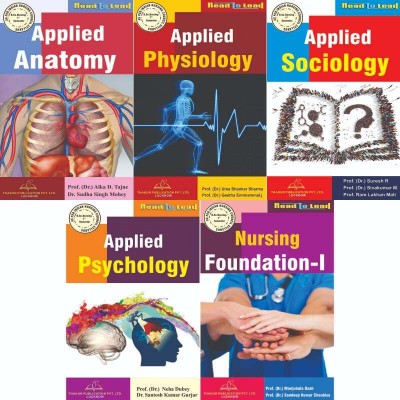Categories
- Pharmacy
-
Nursing
-
MBA
-
BBA
- U.P. State University
- Veer Bahadur Singh Purvanchal University, Jaunpur
- Chaudhary Charan Singh University, Meerut
- Dr. Bhimrao Ambedkar University, Agra
- Chhatrapati Shahu Ji Maharaj University, Kanpur
- Mahatma Jyotiba Phule Rohilkhand University, Bareilly
- Mahatma Gandhi Kashi Vidyapith, Varanasi
- Dr. Ram Manohar Lohia Avadh University, Ayodhya
- Deen Dayal Upadhyaya Gorakhpur University
- Prof. Rajendra Singh (Rajju Bhaiya) University, Prayagraj
-
BCA
- UP State Universities
- University of Pune
- I.K.Gujral Punjab Technical University (PTU)
- University of Rajasthan
- Rashtrasant Tukadoji Maharaj Nagpur University
- Uttar Pradesh NEP2020
- University of Rajasthan ,Jaipur (According to NEP-2020)
- BCCA (B. Com - Computer Science)
- Haryana
- West Bengal
- BBA (CA)
- PUNE BCA (Sci,Commerce)/B.Com (CA)
- Dr. A. P. J. Abdul Kalam Technical University, Lucknow ( AKTU )
- MCA
-
B Ed
- Lucknow University B.Ed Books
- Chaudhary Charan Singh University/Maa Shakambhari University, Saharanpur
- Dr Bhim Rao Ambedkar University, Agra
- Mahatma Gandhi Kashi Vidyapeeth, Varanasi
- Chhatrapati Shahu Ji Maharaj University
- Prof. Rajendra Singh (Rajju Bhaiya) University, Prayagraj (PRSU)
- Mahatma Jyotiba Phule Rohilkhand University(Mjpru), Bareilly
- Dr. Ram Manohar Lohia Avadh University, Ayodhya
- Bundelkhand University, Jhansi
- B.A,B.ed
- B.Sc, B.ed
- Deen Dayal Upadhyaya Gorakhpur University
- Veer Bahadur Purvanchal University (VBPU)
- Maharaja Suhel Dev State University ,Azamgarh (MSDSU)
- Raja Mahendra Pratap Singh State University, Aligarh (RMPSSU)
- Barkatullah Vishwavidyalaya (Bhopal)
- Jiwaji University (Gwalior)
- Vikram University (Ujjain)
- Dr. Harisingh Gour University (Sagar)
- Devi Ahilya Vishwavidyalaya (Indore)
- Rani Durgavati Vishwavidyalaya (Jabalpur)
- Awadhesh Pratap Singh University (Rewa)
- Maharaja Chhatrasal Bundelkhand University (Chhatarpur)
- D. EL. ED
- TET
-
B Com
-
B Sc
- B.Sc. U.P. State Universities Common Syllabus NEP
- Veer Bahadur Singh Purvanchal University, Jaunpur
- University of Lucknow
- Chaudhary Charan Singh University, Meerut
- Madhya Pradesh
- Chhatrapati Shahu Ji Maharaj University, Kanpur
- Dr. Bhimrao Ambedkar University, Agra
- Mahatma Gandhi Kashi Vidyapith, Varanasi
- DEEN DAYAL UPADHYAYA GORAKHPUR UNIVERSITY
- Prof. Rajendra Singh (Rajju Bhaiya) University, Prayagraj
- Dr. Ram Manohar Lohia Avadh University, Ayodhya
- Mahatma Jyotiba Phule Rohilkhand University, Bareilly
- Uttarakhand State Universities
- B.Sc. Bihar Universities Common Syllabus NEP
- University of Rajasthan (Jaipur)
- Haryana
-
Bachelor of Arts [B.A.]
- B.A. Of U.P. State Universities Common Syllabus NEP
- Veer Bahadur Singh Purvanchal University, Jaunpur
- University of Lucknow
- Chaudhary Charan Singh University, Meerut
- Chhatrapati Shahu Ji Maharaj University, Kanpur
- Dr. Bhimrao Ambedkar University, Agra
- Mahatma Gandhi Kashi Vidyapith, Varanasi
- Deen Dayal Upadhyaya Gorakhpur University
- Prof. Rajendra Singh (Rajju Bhaiya) University, Prayagraj
- Dr. Ram Manohar Lohia Avadh University, Ayodhya
- Mahatma Jyotiba Phule Rohilkhand University, Bareilly
- Madhya Pradesh
- Uttarakhand
- Bihar
- University of Rajasthan (Jaipur Syllabus as Per NEP2020)
- Haryana NEP-2020
- B Tech
- LLB
- SWA Education
Applied Physiology Book B.Sc Nursing 1st Sem

Click here to Buy E-Book Edition:
We are providing a textbook of Applied Physiology for B.Sc Nursing 1st semester as per INC by Thakur Publication. Applied anatomy and physiology book for B.Sc 1st year covered all syllabus.
The 'Applied Physiology' book by Thakur Publication is an essential resource tailored for B.Sc Nursing students in their first semester, following the guidelines set by the Indian Nursing Council (INC). Written in English, this comprehensive textbook explores the practical application of physiology in the field of nursing.
AS PER INC SYLLABUS – PRACTICAL & STUDENT-FRIENDLY CONTENT
With its user-friendly approach and up-to-date content, this book provides students with a solid foundation in applied physiology, enabling them to deliver effective and evidence-based nursing interventions.
ISBN- 978-93-90460-69-4/Authors: Prof. (Dr.) Uma Shankar Sharma, Prof. Geetha Emmiammal. J
Tax excluded
Click here to Buy E-Book Edition:
We are providing a textbook of Applied Physiology for B.Sc Nursing 1st semester as per INC by Thakur Publication. Applied anatomy and physiology book for B.Sc 1st year covered all syllabus.
The 'Applied Physiology' book by Thakur Publication is an essential resource tailored for B.Sc Nursing students in their first semester, following the guidelines set by the Indian Nursing Council (INC). Written in English, this comprehensive textbook explores the practical application of physiology in the field of nursing.
AS PER INC SYLLABUS – PRACTICAL & STUDENT-FRIENDLY CONTENT
With its user-friendly approach and up-to-date content, this book provides students with a solid foundation in applied physiology, enabling them to deliver effective and evidence-based nursing interventions.
ISBN- 978-93-90460-69-4/Authors: Prof. (Dr.) Uma Shankar Sharma, Prof. Geetha Emmiammal. J
Syllabus
Applied Physiology
|
Unit |
Content |
Time (Hrs) |
|
I |
General Physiology – Basic Concepts · Cell physiology including transportation across cell membrane · Body fluid compartments, Distribution of total body fluid, intracellular and extracellular compartments, major electrolytes and maintenance of homeostasis · Cell cycle · Tissue – formation, repair · Membranes and glands – functions · Application and implication in nursing |
4 (T) |
|
II |
Respiratory System · Functions of respiratory organs · Physiology of respiration · Pulmonary circulation – functional features · Pulmonary ventilation, exchange of gases · Carriage of oxygen and carbon-dioxide, Exchange of gases in tissue · Regulation of respiration · Hypoxia, cyanosis, dyspnoea, periodic breathing · Respiratory changes during exercise · Application and implication in nursing |
6 (T) |
|
III |
Digestive System · Functions of the organs of digestive tract · Saliva – composition, regulation of secretion and functions of saliva · Composition and function of gastric juice, mechanism and regulation of gastric secretion · Composition of pancreatic juice, function, regulation of pancreatic secretion · Functions of liver, gall bladder and pancreas · Composition of bile and function · Secretion and function of small and large intestine · Movements of alimentary tract · Digestion in mouth, stomach, small intestine, large intestine, absorption of food · Application and implications in nursing |
8 (T) |
|
IV |
Circulatory and Lymphatic System · Functions of heart, conduction system, cardiac cycle, Stroke volume and cardiac output · Blood pressure and Pulse · Circulation – principles, factors influencing blood pressure, pulse · Coronary circulation, Pulmonary and systemic circulation · Heart rate – regulation of heart rate · Normal value and variations · Cardiovascular homeostasis in exercise and posture · Application and implication in nursing |
6 (T) |
|
V |
Blood · Blood–Functions, Physical characteristics · Formation of blood cells · Erythropoiesis – Functions of RBC, RBC life cycle · WBC – types, functions · Platelets – Function and production of platelets · Clotting mechanism of blood, clotting time, bleeding time, PTT · Hemostasis – role of vasoconstriction, platelet plug formation in hemostasis, coagulation factors, intrinsic and extrinsic pathways of coagulation · Blood groups and types · Functions of reticuloendothelial system, immunity · Application in nursing |
5 (T) |
|
VI |
The Endocrine System · Functions and hormones of Pineal Gland, Pituitary gland, Thyroid, Parathyroid, Thymus, Pancreas and Adrenal glands. · Other hormones · Alterations in disease · Application and implication in nursing |
5 (T) |
|
VII |
The Sensory Organs · Functions of skin · Vision, hearing, taste and smell · Errors of refraction, aging changes · Application and implications in nursing |
4 (T) |
|
VIII |
Musculoskeletal System · Bones – Functions, movements of bones of axial and appendicular skeleton, Bone healing · Joints and joint movements · Alteration of joint disease · Properties and Functions of skeletal muscles–mechanism of muscle contraction · Structure and properties of cardiac muscles and smooth muscles · Application and implication in nursing |
6 (T) |
|
IX |
Renal System · Functions of kidney in maintaining homeostasis · GFR · Functions of ureters, bladder and urethra · Micturition · Regulation of renal function · Application and implication in nursing |
4 (T) |
|
X |
The Reproductive System · Female reproductive system – Menstrual cycle, function and hormones of ovary, oogenesis, fertilization, implantation, Functions of breast · Male reproductive system – Spermatogenesis, hormones and its functions, semen · Application and implication in providing nursing care |
4 (T) |
|
XI |
Nervous System · Overview of nervous system · Review of types, structure and functions of neurons · Nerve impulse · Review functions of Brain–Medulla, Pons, Cerebrum, Cerebellum · Sensory and Motor Nervous system · Peripheral Nervous system · Autonomic Nervous system · Limbic system and higher mental Functions-Hippocampus, Thalamus, Hypothalamus · Vestibular apparatus · Functions of cranial nerves · Autonomic functions · Physiology of Pain-somatic, visceral and referred · Reflexes · CSF formation, composition, circulation of CSF, blood brain barrier and blood CSF barrier · Application and implication in nursing |
8 (T) |
5 other products in the same category:
Your review appreciation cannot be sent
Report comment
Report sent
Your report cannot be sent
Write your review
Review sent
Your review cannot be sent













